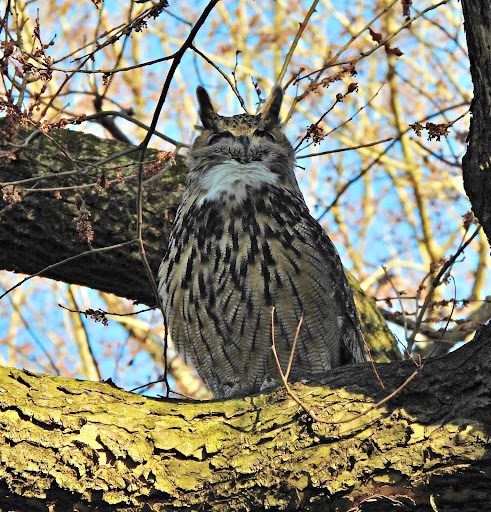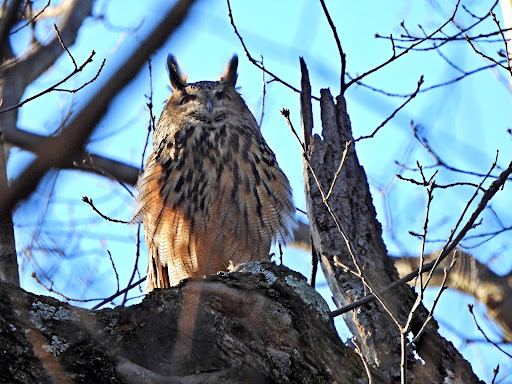Flying Free: The Story of Flaco the Owl in New York City
- April 15, 2024
- By Alice Knisley Matthias

“Look, there’s Flaco!”
Many people in New York City first heard about Flaco the Owl when someone cut the netting of his exhibit at the Central Park Zoo. Flaco lived at the zoo for 13 years ever since he was a small bird, called a fledgling.
The search for Flaco, whose name means ”Skinny” in Spanish, was on!
He flew free for months around New York City with many people following his adventures on social media and sharing their “Flaco sightings.” He perched on the ledges of buildings, hooted from the top of water towers and some lucky people got a visit from him on the railings outside their apartment windows.

New Yorkers are now mourning the loss of the Eurasian eagle owl after he hit a building on West 89th Street in February.
His death marks the end of a year of free flight.
David Barrett runs the social media account on X known as @BirdCentralPark where people share bird sightings and nature news in the city.
“After he was released from his enclosure at the Central Park Zoo in February 2023, Flaco quickly became the world’s most famous bird,” says Barrett.
“His presence in Central Park attracted many observers every day. Some travelers made seeing Flaco a focus of their visit to New York. Flaco often rested in easily-viewable spots, such as his favorite oak tree by East Drive and 104th Street. This is where the memorial event for him took place on March 3, 2024.”
“Those who visited our account to see Flaco also saw our many other posts on the native wild birds of the area. Flaco helped people feel a stronger connection with nature.”
Flaco surprised everyone with how quickly he adapted to his life in the wild.
“The odds were against Flaco, but he triumphed,” says Barrett. “ Flaco seemed to love being a free owl, and he became a symbol of freedom.”
Valerie Block, a NYC photographer, says she became fascinated with Flaco’s story as soon as people learned of his escape.

“I was out of town and found myself hoping to return in time to get a glimpse of him as a free bird before his capture and return to his enclosure,” says Valerie.
“It seemed like he had no plans of ever returning to his cage and he became a symbol of freedom for so many people following his escapades.”
“Flaco proved that animals can be resilient and can learn to live in the wild when given the chance, even if they have been raised in captivity. And he had a fine time of it for more than a year, hunting and hooting and becoming a fixture on the Manhattan skyline. Like so many immigrants, he found his way in the big city.”
Flaco’s death was a heartbreaking end for the birders who followed his daily movements around New York City. His death is a reminder of how difficult it is for a bird to fly free in an urban environment. New laws are being discussed about how to help keep all wild birds in the city safe.
“Thanks to Flaco’s journey, more people have become aware of the need to better protect our wild neighbors,” says Block. “Urban governments are starting to take simple steps like turning out lights at night during migration and making windows safer for birds. And that’s the silver lining.”